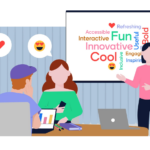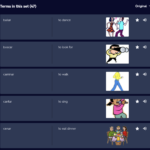The focus this week was about digital accessibility. Of all the classes thus far, this one has resonated with me the most because it made me think about all the activities I’ve done so far in this course as well as all the resources I’ve found and how they are not accessible for everyone. In particular, I never thought about stuff like colour contrast or image descriptions. Especially as a language teacher, having videos like on youtube and images accompanied with subtitles or image descriptions not only make those accessible for students with individual needs but makes the content more accessible for all students.
We also discussed learning by design pedagogy and how this relates to digital accessibility. The three principles are:
- Providing multiple means of engagement
- Providing multiple means of representation
- Providing multiple means of action and expression
In keeping in mind these principles in our pedagogies, we are working equity and inclusion into the learning environment and the learning process for students.
I also had a chance to test out a speech to text tool. I decided not to try a traditional one such as Word, but I wanted to see how well Google Translate is at picking up words spoken by a second language learner. I wanted to do this because I was curious about its efficacy in helping students who have difficulties typing or putting words to paper in the context of a second language classroom. Additionally, Google Translate also has the function of reading back to you what you imputed to identify areas of improvement in pronunciation.
Could be my accent or the fact that I didn’t speak loudly enough, but there was only two significant errors in that one phrase. I wonder though if this would be effective for students who have a very base level of phonological skills in the language.
What are your thoughts on Google Translate as a tool in digital accessibility?





